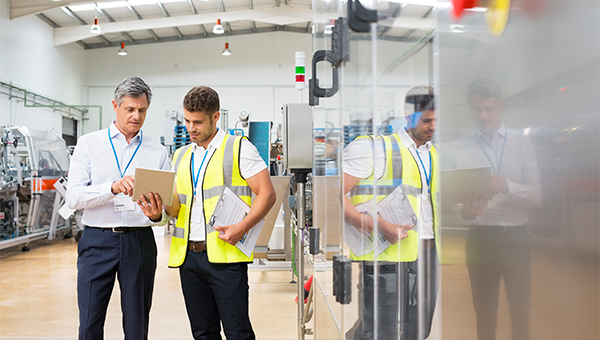Commercial profitability is a simple equation, revenue in versus expenses out. Energy is one of the largest expenditures a company can have and a key variable in maintaining control and balance of this equation. Achieving favorable energy rates is typically a great starting point, but you must also look at energy conservation.
From ensuring customer and employee safety in parking lots to leading the charge for reducing major operational expenses, facilities managers can be tasked with evaluating buildings for a multitude of reasons.
Whether you’ve had energy management tacked onto your existing role, or it has been one of the many ‘hats’ you’ve worn for years, juggling multiple responsibilities at once can make it tough to keep track of all the details. It can be challenging to know if you are making progress toward your energy and cost reduction goals and how your projects and upgrades will affect the bottom line.
The energy industry is continually shifting and fundamental changes are taking place today that have significant impacts on future energy costs. As a facilities manager of a commercial property, you are likely pulled in many different directions each day. Below are a few tips to help you work smarter when it comes to energy solutions.
Ways to Reduce Energy Costs & Consumption
Commercial Energy Audit
Before beginning your energy and cost reduction initiatives, get a baseline on your building(s), system efficiency and the cost of the facility’s operations.
This information is feasible through a commercial energy audit. The American Society of Heating, Refrigerating, and Air-Conditioning Engineers (ASHRAE) has a 3-tiered audit. Consider performing a Level 1 audit for smaller energy projects. Before your more extensive projects and significant investments, conduct a Level 3 audit. Along with getting an energy baseline, an ASHRAE Level 3 audit also identifies areas of energy improvement, appropriate actions to take to reach your sustainability goals, and provides data to drive your project actions forward.
Without a proper audit, you might be putting your budget towards energy optimization projects that aren’t getting you to your end goal.
Benchmarking and Reporting
If you can’t measure it, can you manage it? Measuring your energy consumption allows your business to establish a benchmark and move towards the implementation of sustainable energy programs. Understanding how your building(s) performance ranks relative to past energy usage, as well as group peers, is integral when setting up targets for top performance.
With top-performing energy analytic tools, it’s easier than ever to go above and beyond preventive maintenance and make data-driven change through your sustainability projects while reducing energy costs.
A tool like NextEra 360™, a comprehensive energy optimization software platform, empowers businesses to improve operational efficiency, and energy procurement and sustainability decisions.
Energy-Efficient Lighting
Replacing high energy-consuming lights with more efficient technology is a practical investment that delivers cost efficiency and improved tenant, worker, or client experience in your facility.
With lighting accounting for up to one-third of a building’s energy usage (1), the cost savings potential of a lighting upgrade is significant. However, less than 3% of U.S. businesses have made the conversion to energy-efficient light bulbs, such as LED lighting (2), one of today’s most energy-efficient and rapidly evolving lighting technologies, making it ideal for commercial and industrial use.
The U.S. Department of Energy suggests that upgrading to more energy-efficient lighting products may cut your bill in half. That deserves your attention.
While a facility-wide lighting upgrade or retrofit may present viable options, you don’t have to take an all-or-nothing approach to reap rewards. Making a few changes to an outdated lighting system through lamp replacements, adding controls, or adjusting lighting color and intensity can bring numerous benefits beyond direct energy savings.
Benefits of Energy-Efficient Lighting
- Provide better illumination, increasing worker safety, and productivity
- Burn less energy, produce less heat, and require less maintenance
- Durability and longer lifespan for lamps
- Lessen environmental impact and promote sustainability
- Achieve International Energy Conservation Code (IECC) lighting requirements for LEED® goals
- Increase property value
- Earn rebates and tax incentives at the local, state and/or federal level that offset initial investment
With the potential of reducing energy usage by 50-75%, a lighting upgrade could be the first energy project your business tackles (3).
Energy-Efficient HVAC Systems
According to the U.S. Department of Energy, over 35% of a commercial building’s electricity use is consumed by its heating, ventilation, and air conditioning system (HVAC). In many cases, the systems and controls are running inefficiently, causing facilities to lose a significant amount of money.
We understand HVAC is one of the largest potential sources of wasted energy, and together we work with you to develop a strategy that maximizes the efficiency of your system and reduces your energy costs. Follow these three steps towards optimization and watch your company’s bottom line increase over time.
- System tune-up
With a simple tune-up, you can bring your existing equipment up to peak performance. - System controls
By replacing obsolete controls to increase functionality, this allows the system to respond to external factors, such as building occupancy or weather conditions. - System replacement
By replacing aged equipment with high-efficiency, properly sized equipment, you can improve performance and increase occupant comfort.
Benefits of Commercial HVAC Optimization:
- Reduce energy consumption
- Reduce energy costs. Lowering operation costs; both immediate and long-term
- Enhance overall quality, comfort level and climate control
- Increase the longevity and efficiency of your equipment
- Avoid unexpected costly repairs or replacements by staying ahead of inevitable system updates
- Gain peace of mind knowing the work is being done by a highly experienced engineering and implementation team
And an obvious place to start any energy project is with Usource. We recommend performing a feasibility audit to understand your options and evaluate your ROI. Once complete, our team of energy advisors can help you develop a customized strategy, tailored to your organization’s unique needs. We offer a variety of customized business solutions aimed at increasing energy efficiency and providing cost savings for enterprises and businesses of all sizes. We take you from start to finish and guide you through every step of your energy projects.


